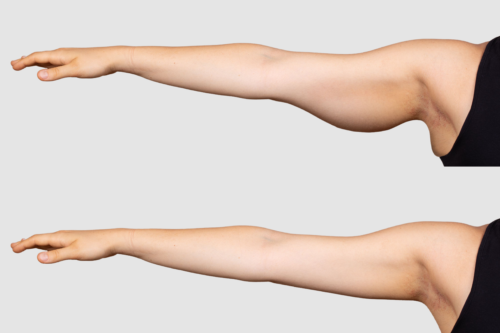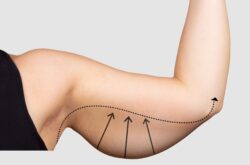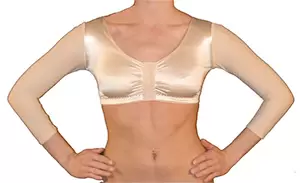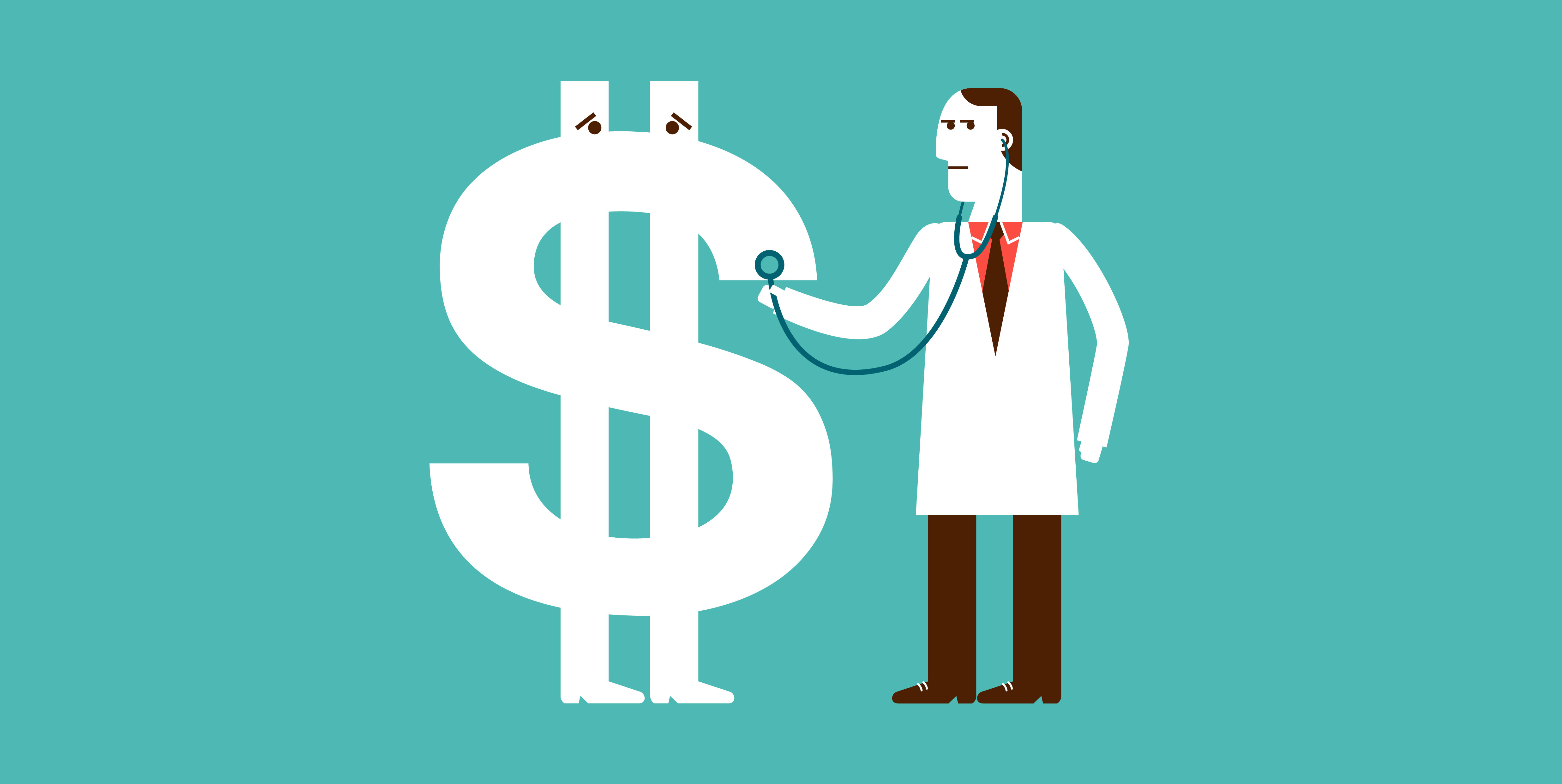Arm Lift Surgery
-
Written by Karen Vieira, PhD, MSM | Medically Reviewed by EnhanceMyself Medical Team | Last updated 8/17/2023
- Overview
Overview
What is an arm lift?
As part of the natural aging process, skin gradually loses its elasticity leading to the formation of folds and wrinkles. In the case of the underside of the upper arm, this loss of elasticity can result in hanging skin, often referred to unflatteringly as “bat wings.” Weight loss can further accentuate this issue.
If you desire slimmer and more toned-looking upper arms, you may find brachioplasty, also known as an “arm lift,” to be a suitable procedure. Arm lift surgery is one of the fastest-growing body contouring surgeries, involving the surgical removal of excess skin and/or body fat from the upper arm to reshape and contour the area.

Arm Lift Surgery
Topics covered on this page
- Cost of arm lift surgery
- Is the cost covered by insurance?
- Are you a candidate?
- Procedure overview
- Recovery time
- Scars after surgery
- When to expect results
- Safety information
- How to choose surgeon
Cost of arm lift surgery
The average cost of arm lift surgery is $4,861 according to the American Society of Plastic Surgeons (ASPS), however this only includes the surgeon’s fee. There are several factors that can influence the cost of your procedure. Some of these factors include:
- Your Surgeon: These fees can vary greatly based on a variety of factors such as the experience and reputation of your plastic surgeon. Highly renowned and in-demand surgeons with a track record delivering natural-looking results may charge a premium for their services. However, the extra expense may be worth it to ensure you achieve your desired aesthetic results.
- Anesthesia: The type of anesthesia used, the duration of your procedure, and the experience your anesthesiologist can impact pricing. There are four main types of anesthesia. They include local, regional, sedation and general.
- Surgical Facility: In many cases, procedures are performed in a hospital or private surgery center which charge fees to cover the use of the operating room as well as other associated services. In some cases, surgeons’ may have their own in office surgical suite which can help reduce the overall expenses which they pass along to patients. To ensure a safe experience, check to see if your surgical facility is certified by the Accreditation Associations for Ambulatory Health Care (AAAHC).
- Geographic Location: The average cost for medical services can differ from one geographic region to another. In general, urban locations tend to have higher fees compared to rural areas. To get a general idea of prices for various medical procedures in your local area, you can use the Healthcare Blue Book, which functions similarly to Kelley Blue Book for estimating car prices.
- Type of Arm Lift: The extent of your procedure will impact the cost. The level of correction required and the amount of excess skin and fat to be removed.
- Medical Care: This includes pre and post operative consultations, medical tests, surgical garments, medications, and other treatment related services.
- Added Procedures: Your overall cost may be higher if you’re considering having other procedures along with your rhinoplasty. However, combining procedures does offer some potential cost savings rather than having them done separately. In a study of 2,294 arm lift patients, 66.8% also underwent concurrent procedures such as liposuction, tummy tuck surgery, and thighplasty.
- Insurance: In some cases, your arm lift may be covered by insurance if it is deemed medically necessary. In these cases, a portion of the procedure may be covered. It’s important to keep in mind, coverage can vary, and specific criteria must be met in order to qualify.
When taking these additional factors into consideration, the total cost for arm lift surgery typically ranges from $5,000 to $8,000.
If you’re considering arm lift surgery, schedule a consultation with a board-certified plastic surgeon near you. This will provide you with an opportunity to discuss your aesthetic goals and gain a better understanding of the specific costs involved.
Is the cost covered by insurance?
Arm lift surgery is typically considered a cosmetic procedure and not usually covered by health insurance. Most insurance companies view arm lifts as elective surgeries performed more so for aesthetic purposes rather than medical necessity.
However, there could be exceptions in cases where excess arm skin is causing significant problems that hinder everyday activities or causing skin issues like rashes or infections.
To explore the potential for insurance coverage, you will likely need to provide evidence such as medical records, photographs, statements from healthcare professionals, and an explanation of how excess arm skin affects your daily life or health. Contact your insurance provider directly to discuss the specifics of your policy and the requirements for coverage.
If insurance does not cover your procedure, research various financing options or payment plans to make the procedure more affordable.
Are you a candidate?
If you feel self-conscious about the appearance of your upper arms due to excess skin or discomfort when wearing sleeveless clothing, an arm lift may be a suitable option for you.
Arm lifts are generally suitable for individuals who have experienced significant weight loss or have a condition known as “lipodystrophy” (abnormal body-fat distribution), resulting in excess skin on the upper arms (referred to as “bat wings”). The amount of excess skin and your desired outcome will determine the type of brachioplasty procedure chosen.
Ideal candidates are non-smokers in good overall health, with some remaining skin elasticity to adapt to the new contours. While the best results are often seen in individuals at or near their ideal weight, this procedure can also be performed on those who are still overweight.
Procedure overview
The specific surgical technique used during an arm lift procedure may vary based on the patient’s needs. The following provides a basic overview of how arm lift procedures are typically performed:

Arm Lift Markings
- Anesthesia: General anesthesia is given to ensure you are asleep and pain-free during the procedure.
- Incision: The surgeon will start by making incisions on the inner side or back of the upper arms. The length of the incisions will vary depending on the amount of excess skin to be removed.
- Tissue Removal: Next, your surgeon will remove excess skin and fat from the arms. In some cases, liposuction is used to remove fat.
- Tightening: After skin and fat are removed, the underlying tissues and muscles are tightened and reshaped.
- Close Incisions: Next, the incisions are closed using sutures.
- Bandages & Compression: Bandages are applied to the incision sites and a compression garment may be placed on your arms to help reduce swelling.
- Recovery Room: Finally, you are taken to a recovery room as you wake up from anesthesia.
- Post-op Instructions: Your plastic surgeon will provide detailed instructions related to your recovery.
Recovery time
Instructions for after-care may vary slightly from surgeon to surgeon, and depend on the exact type of procedure used, whether other procedures were done concurrently, and how well you are doing post-operatively.

Arm Lift Surgery Recovery Compression Garment Photo courtesy of www.NouvelleInc.com
Immediately following the surgery, the physician will place steri-strips (small pieces of medical tape) over the wound to assist with closure, as well as a bolero-type compression garment. The steri-strips are kept in place for two weeks, and then are replaced with Micropore brown tape for one more week. The surgeon will follow your wound healing and scar formation carefully, and may recommend special silicone tape and/or spray and compression for another four months.
You will likely be instructed to avoid bending your elbow for the first 24 hours, and to avoid strenuous activity for two weeks. Swelling all the way down the arm is almost certain, so you should avoid wearing rings or any other tight clothing or jewellery for at least the first two weeks, or until the swelling resolves.
Keeping your arm raised and frequently massaging the fluid from your arm will help reduce the swelling. Most patients take at least a week off work and other obligations to heal, but this depends on the level of activity that their job requires and how well they are healing.
It is common to experience soreness, tenderness, tightness, bruising, swelling, and redness as the arms heal, so you should plan your activities accordingly.
Scarring after surgery
Patients considering arm lift surgery often express concerns about potential scarring. It’s essential to recognize that the extent of scarring will depend on the surgical technique required, which varies by patient.
For patients with good skin tone or mild sagging, minor incisions (a mini arm lift) may be sufficient. In contrast, moderate to severe cases of loose skin and fat may necessitate a full upper arm lift, involving a longer incision that may extend from the armpit to the elbow.
Arm lift surgery, like most procedures involving incisions, leaves scars. However, plastic surgeons typically prioritize incision placement to achieve the best possible outcome with minimal scarring.
When to expect results
Generally, around six weeks after surgery, most major swelling subsides, and you will start to see your final results. These results will continue to improve over the next several months as the tightened arm skin heals and settles.
Safety information
Like any surgical procedure, arm lifts come with inherent risks and potential risks and side effects. A large study of adverse effects of arm lift surgery showed that major complications occurred in 3.4% of cases. The data included combined surgeries, where individuals have more than one procedure done during their arm lift. The overall complication rate for arm lift alone was 1.3%, and for combined procedures 4.4%. Some of these effects include:
- Infection
- Hypertrophic scarring (raised, enlarged scar)
- Wound re-opening and delayed healing
- Asymmetry between the arms
- Recurrence of skin laxity
- Nerve damage
Post-surgery, your arms may initially feel stretched too tight, but this sensation should diminish as your tissues adapt to their new contours. Prior to undergoing surgery, discuss potential risks and side effects with your plastic surgeon.
How to choose a plastic surgeon
It is important to carefully select your arm lift surgeon. The surgeon you choose can significantly impact your surgical outcome and overall satisfaction. Find a plastic surgeon with extensive experience in performing arm lift procedures. Also, make sure that they are board-certified and affiliated with one or more of the following organizations:
- The American Board of Plastic Surgery
- The American Society of Plastic Surgeons
- The Aesthetic Society
Ready to take the next step? Find a plastic surgeon near you.
EnhanceMyself.com relies on sources such as professional medical organizations, government agencies, academic institutions, and peer-reviewed scientific journals to write it’s articles. Learn more about how we ensure our content is accurate, in-depth, and unbiased by reading our editorial guidelines.
*Medical Disclaimer: This website does not provide medical advice. Read more.



